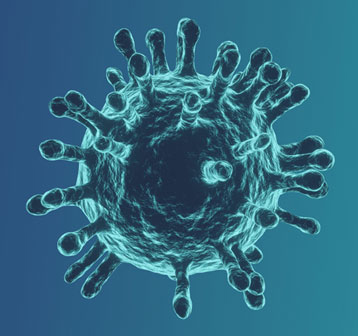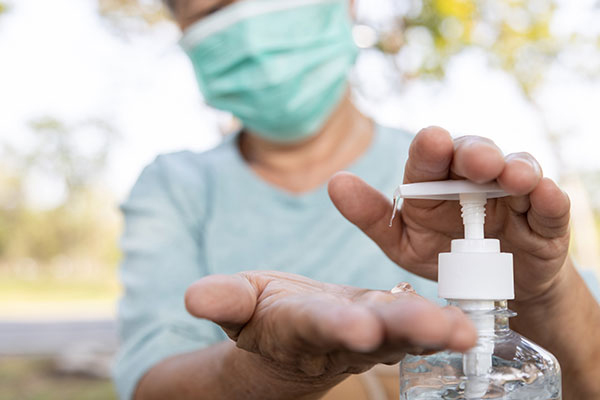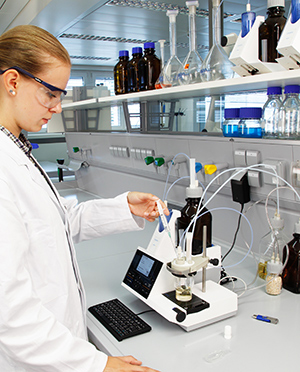Increased Manufacturing of Disinfectants Used Against Coronavirus
With the current world under crisis due to the SARS Coronavirus 2 (SARS CoV-2), which causes the disease known as COVID-19, people are searching for answers to their concerns. The Washington Post published an article at the end of February providing details on the top internet searches related to COVID-19 (Ingraham, 2020).
It’s no surprise the top search term was “Coronavirus.” People all over the world want to understand the details of this virus – what it is, how the virus is spread, and what the symptoms include. Dr. Stephanie A. Smith wrote a very informative piece titled “Solving Water During a Pandemic: What Could Be More Essential?” In her blog, she discusses the biology of the virus and the importance of water quality and personal hygiene during this time.
Many of you have heard “wash your hands” time and time again. And while washing your hands is an essential part of personal hygiene, it is just one part of the solution in preventing the spread of COVID-19.
People are becoming more aware of the importance of regularly cleaning and disinfecting their workspaces, homes, and other areas that are defined as common spaces. While people are searching the symptoms, spread rate, and other details about the virus, they are also searching terms like ‘Lysol’ and ‘Disinfectant.’
First off, cleaning and disinfecting are two different things, and not all household products are considered disinfectants – which means they are not considered effective against killing the coronavirus.
The CDC defines cleaning as, “the removal of germs, dirt, and impurities from surfaces,” (Cleaning, 2020). Cleaning does not kill germs but rather removes germs from the surface. By removing from the surface, the spread rate and risk of infection decreases. On the other hand, the CDC defines disinfecting as, “using chemicals to kill germs on surfaces,” (Cleaning, 2020). Disinfecting surfaces does not necessarily clean dirty areas or remove germs, but rather kills germs on the surface, often cleaning a surface followed by disinfecting can be more effective. This also reduces the spread and infection rates.

While the two terms run hand-in-hand, not all household cleaning products are disinfectants – which means many cleaning supplies being used cannot kill coronaviruses. To find out which products are effective at disinfecting surfaces and combating COVID-19 you can view a list of registered products on the Environmental Protection Agency’s website.
As you search for cleaning supplies and disinfectants for your home, office, and other common areas, take note of the low supply at your local grocery or convenience stores. The pandemic has sparked a lot of concern, which has led people to ‘stock up' on various goods.
Companies are working as efficiently as possible to respond to the increasingly-high demands from the public and private sectors needing supplies. The Clorox Company recently announced they are operating disinfection and cleaning production facilities 24/7 to help maximize supply (Dorer, 2020).
While this may seem like a shock to some, other companies are completely transforming business models to help combat COVID-19. Businesses that once manufactured beer, perfume, and other consumer goods are converting their manufacturing facilities to produce resources to combat the pandemic (Tognini, 2020). As production increases, throughput capabilities in quality control departments will also need to match pace.
If you reviewed the registered disinfectants, you may notice that many of them are recognizable products you currently use. You also may notice that many of them contain a compound called quaternary ammonium compounds. Actually, over 60% of the registered disinfectants on the EPA website contain quaternary ammonium compounds.
Manufacturers who produce disinfectants with these compounds use titration as a means of quality control to ensure consistency in the production. Titration is commonly done manually using a simple glass burette setup. Though, with increasing throughput, the number of manual titrations would be nearly impossible for some companies and would limit the throughput capability in laboratories. Employees will not only have to complete the titration by hand but will also spend a significant amount of time monitoring the reactions.
Thankfully, there is equipment to avoid manually titrating samples. Automated titration equipment helps minimize the amount of time qualified employees to spend on titrating samples. Xylem Lab Solutions offers a large portfolio of laboratory products that can be used in a variety of applications. Our YSI titrators are built to increase throughput capabilities, improve accuracy, repeatability, all while simultaneously keeping laboratory staff safe. Read more about the advantages of automated titration in our blog, Which is Better - Manual or Automated Titrations?
Ultimately, Xylem Lab Solutions encourages everyone to remain safe during these uncertain times and practice appropriate social distancing measures. If you are interested in knowing what Xylem is doing during this pandemic, click here. Finally, if you have questions about your work with Xylem please contact your local Xylem support team, you can email us at COVID-19@xyleminc.com.

References
Cleaning and Disinfection for Households. (2020, March 28). Retrieved April 2, 2020, from https://www.cdc.gov/coronavirus/2019-ncov/prepare/cleaning-disinfection.html
Dorer, B. (2020, March 30). Clorox's Call to Action to Support Public Health in the Fight Against COVID-19 - Good Growth Blog. Retrieved April 2, 2020, from https://www.thecloroxcompany.com/blog/clorox-coronavirus/
Ingraham, C. (2020, February 29). A week of coronavirus anxiety, in 11 Google searches. Retrieved from https://www.washingtonpost.com/business/2020/02/29/google-searches-coronavirus/
List N: Disinfectants for Use Against SARS-CoV-2. (2020, April 2). Retrieved from https://www.epa.gov/pesticide-registration/list-n-disinfectants-use-against-sars-cov-2
Tognini, G. (2020, April 1). Coronavirus Business Tracker: How The Private Sector Is Fighting The COVID-19 Pandemic. Retrieved April 7, 2020, from https://www.forbes.com/sites/giacomotognini/2020/04/01/coronavirus-business-tracker-how-the-private-sector-is-fighting-the-covid-19-pandemic/#547cdf2b5899